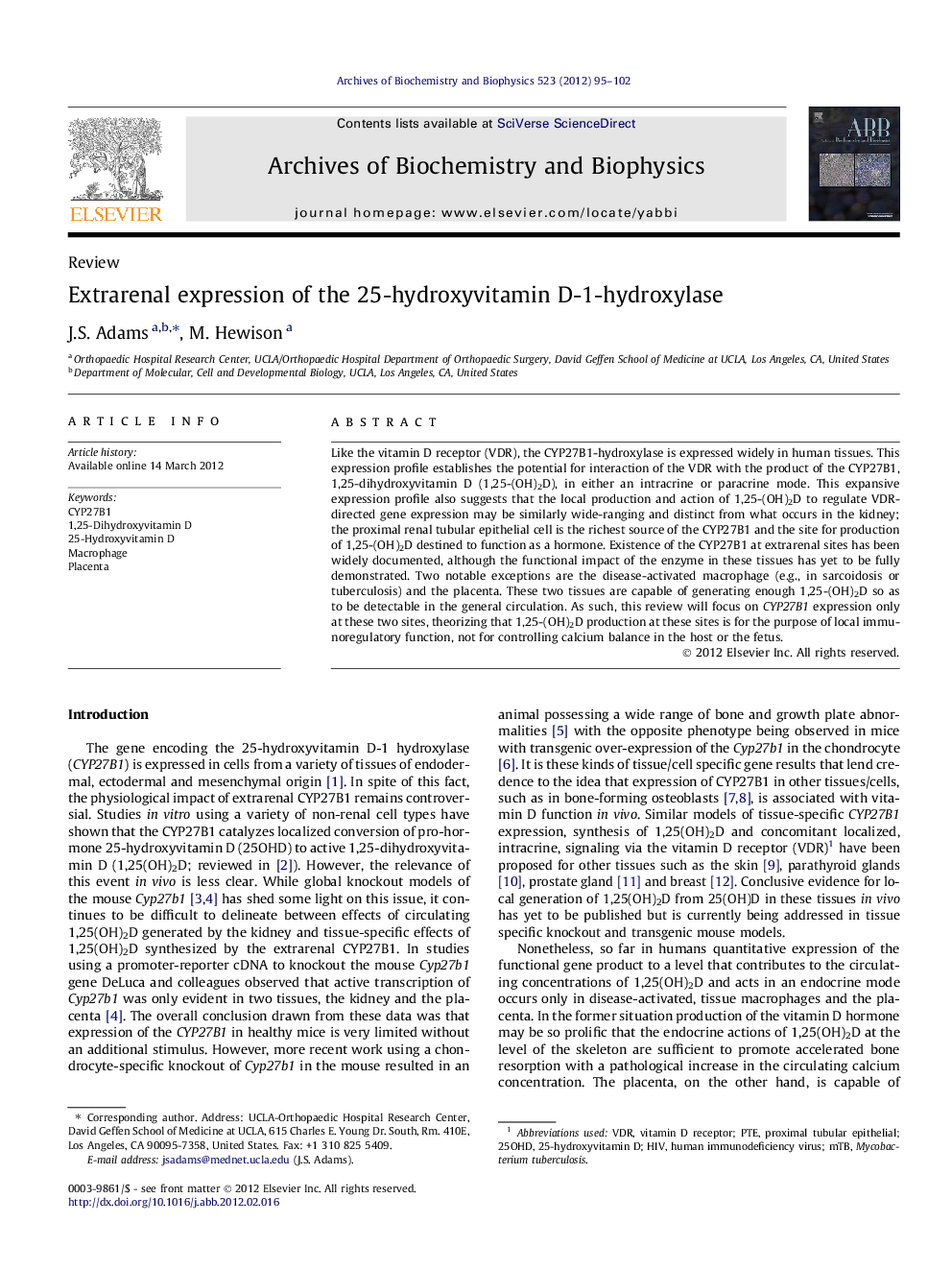| Article ID | Journal | Published Year | Pages | File Type |
|---|---|---|---|---|
| 1925545 | Archives of Biochemistry and Biophysics | 2012 | 8 Pages |
Like the vitamin D receptor (VDR), the CYP27B1-hydroxylase is expressed widely in human tissues. This expression profile establishes the potential for interaction of the VDR with the product of the CYP27B1, 1,25-dihydroxyvitamin D (1,25-(OH)2D), in either an intracrine or paracrine mode. This expansive expression profile also suggests that the local production and action of 1,25-(OH)2D to regulate VDR-directed gene expression may be similarly wide-ranging and distinct from what occurs in the kidney; the proximal renal tubular epithelial cell is the richest source of the CYP27B1 and the site for production of 1,25-(OH)2D destined to function as a hormone. Existence of the CYP27B1 at extrarenal sites has been widely documented, although the functional impact of the enzyme in these tissues has yet to be fully demonstrated. Two notable exceptions are the disease-activated macrophage (e.g., in sarcoidosis or tuberculosis) and the placenta. These two tissues are capable of generating enough 1,25-(OH)2D so as to be detectable in the general circulation. As such, this review will focus on CYP27B1 expression only at these two sites, theorizing that 1,25-(OH)2D production at these sites is for the purpose of local immunoregulatory function, not for controlling calcium balance in the host or the fetus.
► The macrophage and placenta as the extrarenal sites for the CYP27B1-hydroxylase. ► The role of 1,25-dihydroxyvitamin D in the management of the immune response. ► The elicited immune response may be compromised by vitamin D deficiency.
